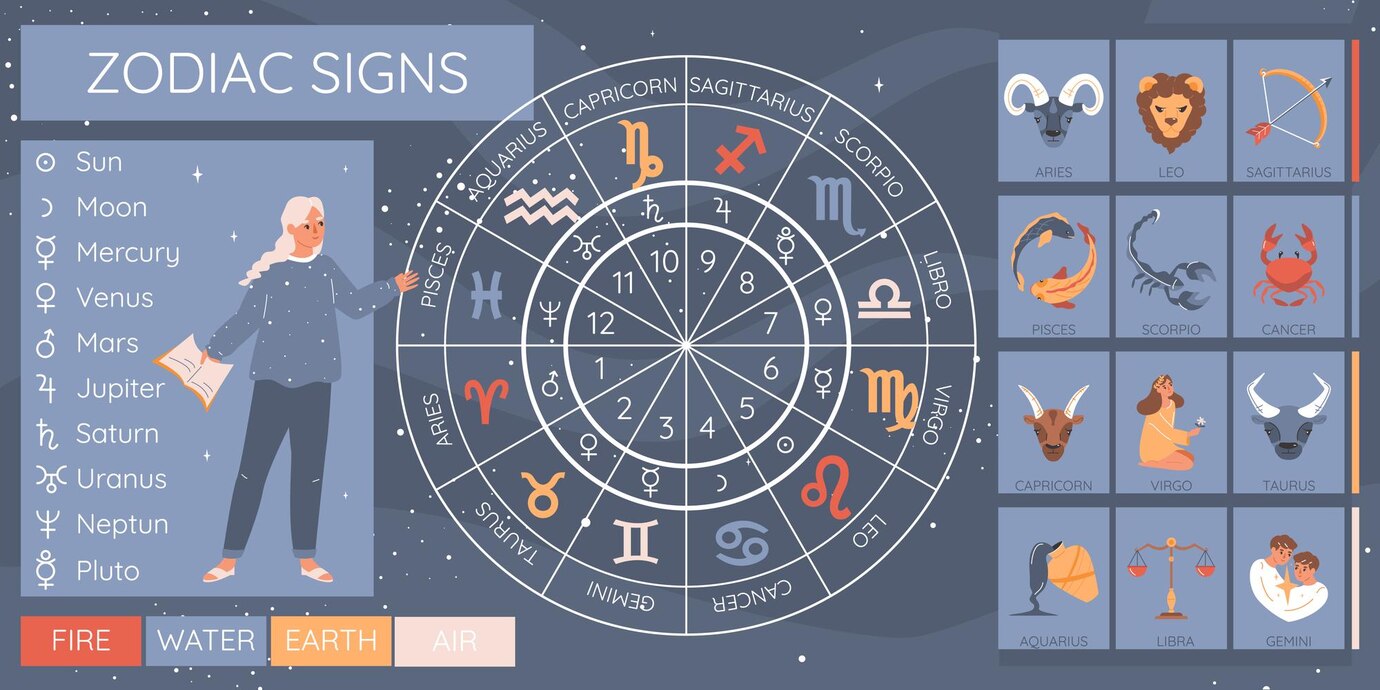Your birth chart is a cosmic snapshot of the sky at the exact moment of your birth. It reveals your personality, strengths, challenges, and life path through the positions of the planets, houses, and aspects. While it may seem complex at first, understanding the basics of astrology houses and aspects can give you incredible insights into your inner self and destiny.
What Is a Birth Chart?
A birth chart (also known as a natal chart) is a circular map that shows:
- The 12 zodiac signs
- The 12 astrological houses
- The Sun, Moon, and planets at the time of your birth
- The aspects (angles) formed between the planets
Understanding the 12 Astrology Houses
In astrology, the 12 houses represent different areas of your life. Each house is ruled by a zodiac sign and indicates specific life experiences and themes.
The 12 Houses and Their Meanings:
- 1st House – The Self: Identity, physical body, personal style.
- 2nd House – Finances and Values: Income, wealth, material values.
- 3rd House – Communication and Learning: Siblings, short trips, knowledge.
- 4th House – Home and Family: Home, heritage, childhood.
- 5th House – Creativity and Romance: Fun, passion, creativity.
- 6th House – Work and Health: Health, habits, discipline.
- 7th House – Partnerships: Marriage, contracts, partnerships.
- 8th House – Transformation and Shared Resources: Sexuality, inheritance, transformation.
- 9th House – Philosophy and Travel: Religion, travel, education.
- 10th House – Career and Public Life: Status, achievements, authority.
- 11th House – Friendships and Goals: Community, innovation, hopes.
- 12th House – Spirituality and Secrets: Solitude, karma, hidden enemies.
What Are Astrology Aspects?
Aspects are the angles (measured in degrees) between planets. They indicate how the planetary energies interact and influence each other.
The Major Aspects and Their Meanings:
- Conjunction (0°): Amplifies combined energy.
- Sextile (60°): Positive and creative flow.
- Square (90°): Conflict leading to personal growth.
- Trine (120°): Easy, natural talents.
- Opposition (180°): Polarity and tension requiring balance.
How to Read Your Birth Chart: Step-by-Step
Step 1: Identify Your Sun, Moon, and Rising Signs
- Sun sign: Your core identity and ego.
- Moon sign: Your emotions and inner self.
- Rising sign: How others perceive you.
Step 2: Locate the Planets in the Houses
Note which houses your planets are in. For example:
- Venus in the 7th house: You value love and harmony in relationships.
- Mars in the 10th house: You are driven and ambitious in your career.
Step 3: Analyze the Aspects
Identify harmonious aspects (trines, sextiles) that indicate natural talents. Spot challenging aspects (squares, oppositions) that reflect growth areas.
Step 4: Interpret the Overall Chart
Consider how the houses, planets, and aspects interact. Example:
- Sun in Leo (5th house) trine Jupiter: Creative, lucky, and confident in self-expression.
- Moon in Pisces (12th house) square Saturn: Emotionally sensitive but prone to self-doubt.
Why Reading Your Birth Chart Matters
By understanding your birth chart, you can:
- Discover your strengths and challenges
- Align with your life purpose
- Improve your relationships through self-awareness
- Identify career paths that align with your planetary influences
- Embrace personal growth by working through challenging aspects
Final Thoughts: Unlock the Secrets of Your Birth Chart
Reading your birth chart is a transformative journey of self-discovery and empowerment. By mastering the houses, aspects, and planetary positions, you gain deeper insights into your personality, relationships, and life path.
🌟 Explore the mysteries of your birth chart with expert guidance and personalized astrological insights at Zodiac Insight.
